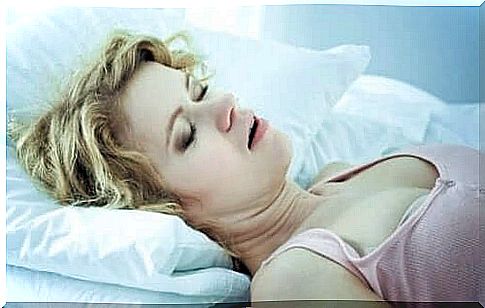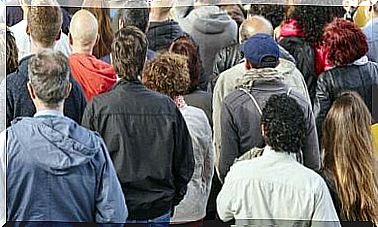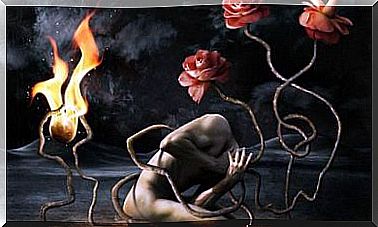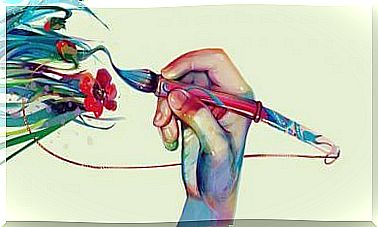Atypical Depression

Despite its name, atypical depression is actually quite common. It is similar to clinical depression, but symptoms are uncommon in people who have the disorder. For example, these people can react very well and positively to their surroundings and also have a particularly large appetite, but at the same time they feel a heaviness in their arms and legs.
Psychologists first used this clinical term in the 1950s. They initially used it to describe patients with depression who did not respond to common antidepressants. It took further analysis and research to find common factors between these patients and to understand what exactly they were dealing with.
They first observed that these patients showed pain in their arms and legs. They reported that it was difficult to move because their extremities felt heavy. Psychologists also noted that they exhibited atypical signs and symptoms of clinical depression, such as hypersomnia (addiction to sleep) or hyperphagia (overeating).
The researchers also observed that their patients’ symptoms worsened as the day progressed. In the morning, they could respond to compliments, enjoy the company of others, and respond positively to certain stimuli. In the afternoon things changed. After collecting data and observing these common symptoms, the researchers named this particular condition “atypical depression.”
From then on it was much easier to develop new drugs specifically for this disorder. Also, many psychologists believe that atypical depression accounts for almost 20% of all cases of depression. Consequently, it is important to develop a psychological and pharmacological approach that is tailored to this disorder.

Atypical depression: features and symptoms
A study by Jonathan RT Davidson of the University of California shows that the most common symptoms of atypical depression are biological or vegetative. Other studies have produced similar results. Patients with atypical depression mainly complain of physical complaints. They are often exhausted and feel weak.
This is one of the reasons this condition is so difficult to diagnose. You may think that you are just overworked, overtired, not eating a healthy diet, or not getting enough exercise. However, the DSM-5 describes atypical depression as persistent. This means that if you don’t get help, your mental health will suffer.
What are the most common characteristics of this mental illness?
Your mood changes with positive stimuli
A characteristic of clinical depression (or dysthymia) is the inability to respond to positive situations or stimuli. Sufferers have serious problems with any kind of joy or happiness. However, people with atypical depression experience positive reactions when they see someone they love, receive praise, or are encouraged.
Atypical depression: anxiety, nervousness, restlessness and suspicion
Atypical depression also has a high correlation with other disorders, such as anxiety or bipolar disorder. The most common symptoms include nervousness, hypersensitivity, fear of failure, etc.
Likewise, patients with atypical depression find it difficult to maintain happy, stable relationships. They also have problems trusting other people, they are very sensitive to criticism and are afraid of betrayal, abandonment or loneliness.
Leaded paralysis
Lead paralysis is the feeling of heaviness in the extremities, as already described at the beginning. Affected people feel very tired or pain in their arms and legs, which affects their mobility.
Atypical depression and hypersomnia
Too much sleep is another sign of atypical depression. You sleep excessively, take long naps, get up late in the morning and have limited productivity. It doesn’t matter how much sleep you get, you feel permanently tired. Resting does not re-energize you and make you feel stronger.

Big appetite
Fear and nervousness often lead to almost permanent hyperphagia. This makes you constantly hungry and compulsive to eat.
Atypical depression: treatment options
According to Cristancho, O’Reardon, and Thase (2012), atypical depression in women and adolescents is usually chronic and more common. This type of depression is mostly treated by health professionals outside of the hospital.
If you have atypical depression and don’t receive treatment, the consequences can be serious. This is especially true if there is an overlap with other diseases such as anxiety or bipolar disorder.
The best approach to treatment depends on the individual patient’s situation. For example, many women with atypical depression need specific help as they also have eating disorders such as bulimia. However, with good psychological therapy and appropriate medication, patients can see significant improvement.
- Cognitive behavioral therapy enables patients to analyze thought patterns and behaviors in order to improve their everyday social skills.
- It has also been shown that treatment with MAO inhibitors (psychotropic drugs) is very effective in patients with atypical depression.
Finally, it is important to mention one more detail about atypical depression. This disorder is far more common than you might think, with people affected on average in their mid-20s. Through early detection, doctors can help their patients gain better control over their lives and provide them with tools and strategies to be happy and confident people.









